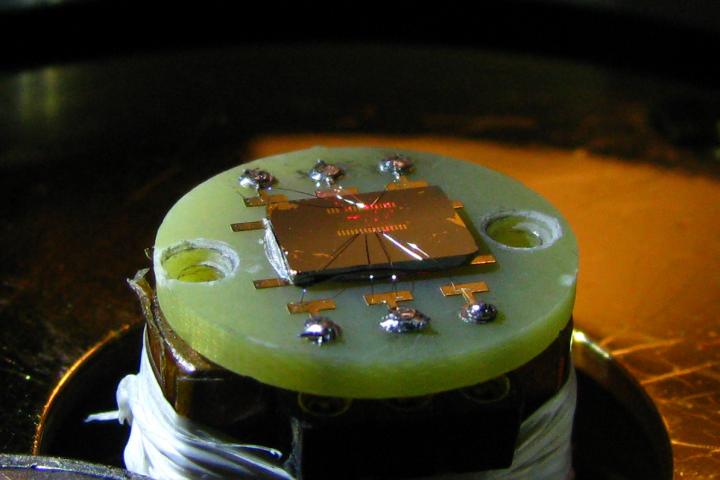Penn team gives optical switches the 'contrast' of electronic transistors

System is an important step towards photonic computers
In a paper published in Nature Communications, Ritesh Agarwal and colleagues at the University of Pennsylvania's School of Engineering and Applied Science have taken an important step towards photonic computing. Their aim is to make more powerful computers using light rather than electricity as the medium.
The team has been searching for right combination and physical configuration of materials that can amplify and mix light waves in ways that are analogous to electronic computer components.
Now they have managed to precisely control the mixing of optical signals via tailored electric fields, and obtain outputs with a near perfect contrast and extremely large on/off ratios. Those properties are key to the creation of a working optical transistor.
"Currently, to compute '5+7,' we need to send an electrical signal for '5' and an electrical signal for '7,' and the transistor does the mixing to produce an electrical signal for '12,'" Agarwal said. "One of the hurdles in doing this with light is that materials that are able to mix optical signals also tend to have very strong background signals as well. That background signal would drastically reduce the contrast and on/off ratios leading to errors in the output."
With background signals washing out the intended output, necessarily computational qualities for optical transistors, such as their on/off ratio, modulation strength and signal mixing contrast have all been extremely poor. Electric transistors have high standards for these qualities to prevent errors.
The search for materials that can serve in optical transistors is complicated by additional property requirements. Only "nonlinear" materials are capable of this kind of optical signal mixing.
To address this issue, Agarwal's research group started by finding a system which has no background signal to start: a nanoscale 'belt' made out of cadmium sulphide. Then, by applying an electrical field across the nanobelt, Agarwal and his colleagues were able to introduce optical nonlinearities to the system that enable a signal mixing output that was otherwise zero.
"Our system turns on from zero to extremely large values, and hence has perfect contrast, as well as large modulation and on/off ratios," Agarwal said. "Therefore, for the first time, we have an optical device with output that truly resembles an electronic transistor."
With one of the key components coming into focus, the next steps toward a photonic computer will involve integrating them with optical interconnects, modulators, and detectors in order to demonstrate actual computation.
Agarwal Lab members Ming-Liang Ren, Jacob S. Berger, Wenjing Liu and Gerui Liu all contributed to the research.
































